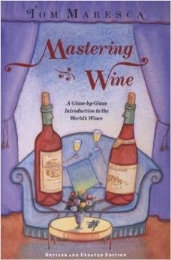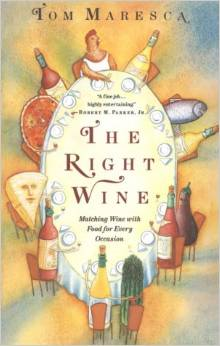This post should really be called “The Blessings of Bad Bookkeeping.” Rummaging around in the mini-storage unit where I keep most of my wine, I discovered a case of Spanish wines – four each of a Rioja, a Garnacha, and a Jumilla – that I had meant to drink years ago. I had originally squirreled them away only because I had no room for any more wine at home. The wines – an ’01, an ’02, and an ’03, all non-riservas – were clearly meant for short-term keeping and drinking young, but once out of sight I promptly forgot about them. (Don’t try to tell me you’ve never done it.)
When I happened upon the case a few weeks back, I immediately brought it home, but not with any high hopes. Rather, I thought there was a better than fifty-fifty chance that the wines were all dead or dying, way past their prime. Well, the good news is I was very wrong: All three wines are drinking deliciously, with plenty of vitality left. Granted, the great burst of fresh fruit that had been their initial attraction had faded and been replaced in each case by a different medley of mature fruit-and-earth flavors – but that was and is fine by me: I love mature wines, and these three now fit that description. Sometimes our ineptitudes work for us: not always, not even often, but when it happens it can be very nice indeed. Here are the wines and what little I know about them.
.
Allende Rioja DO 2001
 How can you not like Rioja? I think of Riojas as a lot like Chianti Classico: a traditional wine, made from a traditional blend of grape varieties, charming to drink young, yet – as this bottle showed – capable of aging gracefully and well. We drank this with grilled lamb chops, with which Rioja always collaborates beautifully.
How can you not like Rioja? I think of Riojas as a lot like Chianti Classico: a traditional wine, made from a traditional blend of grape varieties, charming to drink young, yet – as this bottle showed – capable of aging gracefully and well. We drank this with grilled lamb chops, with which Rioja always collaborates beautifully.
Miguel Angel de Gregorio, the owner of Allende, is regarded as an innovator and modernist in the Rioja, and this vintage of his wine may well be made from 100% Tempranillo rather than the conventional blend, and may have been subjected to the usual modernist regime of Tronçais and Allier barriques – but you wouldn’t know it from its now-13-year-old package of flavor, which is gentle and harmonious in the classic style of traditional Rioja. The estate is located in Rioja Alta and cultivates the usual mix of varieties: Tempranillo chiefly, with Graciano, Malvasia, Garnacha, and Viura.
.
Juan Gil Jumilla DO 2002
 A large, family-owned estate, planted in old-vine Monastrell and newer vineyards of French varieties. My bottle was 100% Monastrell, for which the Jumilla DO is famous (at least in Spain). Monastrell is probably more familiar to most American winos as Mataro or Mourvèdre: Despite the proliferation of names, these all appear to be the same grape, and eastern Spain, around Valencia, where the Jumilla DO is located, appears to be its ancestral home. Jancis Robinson describes it as a “high-quality, heat-loving dark-skinned variety most valued for its heady, structured contribution to blends.”
A large, family-owned estate, planted in old-vine Monastrell and newer vineyards of French varieties. My bottle was 100% Monastrell, for which the Jumilla DO is famous (at least in Spain). Monastrell is probably more familiar to most American winos as Mataro or Mourvèdre: Despite the proliferation of names, these all appear to be the same grape, and eastern Spain, around Valencia, where the Jumilla DO is located, appears to be its ancestral home. Jancis Robinson describes it as a “high-quality, heat-loving dark-skinned variety most valued for its heady, structured contribution to blends.”
Juan Gil’s Monastrell undergoes what appears to be a combination of traditional practices and modern treatment: long skin contact – 25 days – and then small French wood for a year. Once again, the wine, at more than a decade old, didn’t taste of oak, but of mature fruit – dark, just-going-pruny flavors, with a lot of earthy/mushroomy notes. Not too big: medium-bodied, in what Italians would call rustico-elegante style – meaning a little bit country style, but far from a bumpkin.
.
Borsao Tres Picos Garnacha (Campo de Boria DO) 2003
 Bodegas Borsao is essentially a large and extremely well-run cooperative, located in Aragon in northeast Spain – the so-called Empire of Garnacha. Garnacha is, of course, Grenache, probably one of the most widely planted varieties in the world. As Grenache does well in hot, arid zones, where it can produce a wine of great distinction and remarkable long life, Aragon suits it admirably, and Borsao’s low yields and tight quality controls make the most of it. Low-temperature fermentation in stainless steel and a brief excursion in oak result in a wine with abundant fruit, still showing notes of freshness and piquancy at eleven years, and with a structure of soft tannins and good acidity sufficient to carry it for at least five more years – maybe even another eleven. Like most Grenache wines, this one is very versatile with food, dealing comfortably with everything from roast chicken to a hearty chile con carne.
Bodegas Borsao is essentially a large and extremely well-run cooperative, located in Aragon in northeast Spain – the so-called Empire of Garnacha. Garnacha is, of course, Grenache, probably one of the most widely planted varieties in the world. As Grenache does well in hot, arid zones, where it can produce a wine of great distinction and remarkable long life, Aragon suits it admirably, and Borsao’s low yields and tight quality controls make the most of it. Low-temperature fermentation in stainless steel and a brief excursion in oak result in a wine with abundant fruit, still showing notes of freshness and piquancy at eleven years, and with a structure of soft tannins and good acidity sufficient to carry it for at least five more years – maybe even another eleven. Like most Grenache wines, this one is very versatile with food, dealing comfortably with everything from roast chicken to a hearty chile con carne.
.
So there you have it: the happy results of little digging around in storage. To paraphrase an annoying commercial, What’s in your closet?


